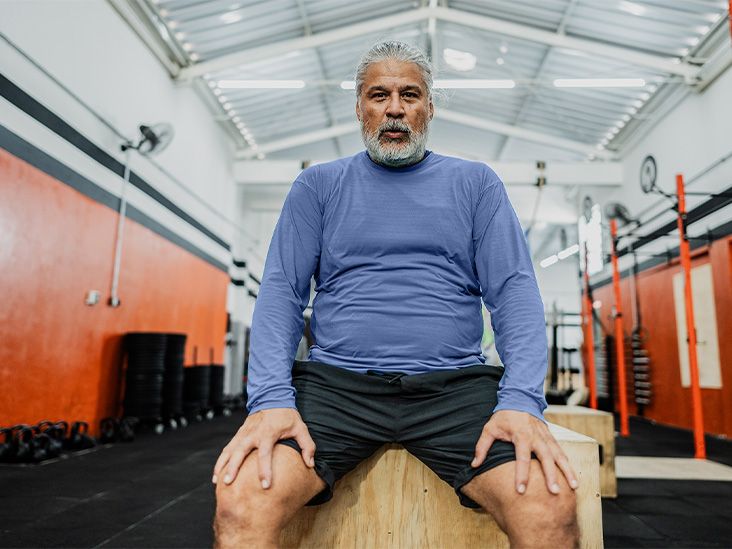Then there’s gymnastics: Even after scores have been posted and the competition has ended, most athletes wait in limbo. It’s a subjective sport and a subjective decision. The gymnasts head to a private room and wait to hear whether they have earned a spot on the U.S. team.
With this year’s competition again fierce, particularly for the final spots, that room will be filled with tension Sunday night in Minneapolis, when an opaque process will determine which gymnasts will represent the United States at the Paris Games.
For two decades, the selection process has followed a similar pattern. The top all-around finisher — and the top two in some years — clinches an Olympic berth. The rest of the team is chosen by a committee, according to criteria that are broad and vague.
Previous regimes — Martha Karolyi from the 2004 to 2016 Olympics and then Tom Forster for the Tokyo Games — had different approaches. With new leadership entering the Paris Olympics, it’s unclear how this committee will choose the five gymnasts to represent the country this summer.
One method prioritizes all-around standings at the trials. The other favors gymnasts who have complementary strengths that maximize the team score. The two approaches often would not lead to the selection of the same five gymnasts.
Karolyi built rosters that valued team scores over all-around standings. Because three athletes perform on each apparatus in the team final, gymnasts don’t need to be strong across the board to be valuable. For instance, Madison Kocian, who finished eighth in the all-around at the 2016 trials but was excellent on bars, and McKayla Maroney, who was seventh in the all-around but the country’s best gymnast on vault in 2012, earned Olympic berths. Both those U.S. teams won gold, and Kocian and Maroney earned individual silver medals in their signature events. Compared with the Tokyo Olympics, at which teams were limited to four members, those Karolyi teams had five, providing a bit more room for gymnasts who excel on one apparatus.
Forster, who became the high performance coordinator in 2018, was part of a three-person committee in 2021 that opted to name the top four all-around finishers to the Olympic team.
“As much as possible — it’s just my personal preference — I wanted rank order,” Forster said, referring to the all-around standings. “It just seems the most fair.”
A slightly different combination of gymnasts would have upped the team’s scoring potential by a small margin, but Forster said at the time, “We just didn’t feel it was worth changing the integrity of the process simply for a couple of tenths.”
Forster said in an interview this week that the difference between these hypothetical team scores would have needed to be around a full point to convince him to deviate from the all-around standings.
No recent U.S. Olympic women’s gymnastics team had so closely mirrored the results from the trials.
An Olympic team hadn’t been chosen solely by all-around standings since 1996. This method usually means all gymnasts have well-rounded skill sets and probably could compete if needed on any apparatus. With four-member teams in Tokyo, all gymnasts competed on each apparatus in the qualifying round and only one athlete sat out per event in the team final. That made all-around ability more important than usual. With a five-member team, Forster said his approach might have been different.
Grace McCallum earned the final spot on the team because of her fourth-place finish at the trials. However, MyKayla Skinner would have boosted the team a bit more because of her strong vault. Skinner received a spot to compete in Tokyo as an individual rather than with the team.
When explaining the selection, Forster referenced the team’s wide margins of victory at the world championships in 2018 and 2019, and said: “We’re so, so fortunate that our athletes are so strong that I don’t think it’s going to come down to tenths of a point in Tokyo.”
But the Russian Olympic Committee led by more than a full point in the qualifying round after the U.S. team’s shaky performance. Forster said the team’s low execution scores were a surprise. In the chaotic team final, when Simone Biles’s vault went awry and she didn’t compete on any other apparatus, the Russians won the gold medal by an even larger margin.
A team with the highest potential score could have more of a buffer to withstand errors. But a team with additional options on each apparatus could be perceived as the safer choice, particularly when considering scenarios such as a last-minute injury. It’s reasonable to consider such instances, especially when the scoring difference between several gymnasts is minimal.
In 2016, the team score would have been maximized by choosing Kocian and Ashton Locklear, another standout gymnast on bars. But two gymnasts contributing on just one apparatus would have been risky. Karolyi chose Kocian, who scored higher than Locklear on bars at the trials, and rounded out the team with Gabby Douglas, the 2012 Olympic all-around champion.
Douglas fell on beam during both nights of competition at the trials and placed seventh in the all-around. Despite the mistakes, Douglas’s scores gave her a narrow edge over Skinner, the fourth-place finisher, when simulating a team final. Karolyi said at the time she believed Douglas would improve during the training camp ahead of the Games. She was right: In the qualifying round at the Olympics, Douglas scored more than a point higher than she had at nationals or the trials.
This summer, the United States will be expected to win the team final by a large margin, especially given the absence of Russia. Many five-gymnast combinations probably would be strong enough to win gold. But because these decisions have life-changing implications, the strategy prompts questions: Does a gymnast who finishes seventh but has strengths that maximize the team score deserve an Olympic berth any more or less than the athlete who placed fifth? The vague selection procedures only underscore the importance of the committee explaining the reasoning behind their choices.
Chellsie Memmel, the technical lead of the high performance staff, said recently that the team final is “our first priority,” and she noted the format that requires just three gymnasts to perform on each apparatus. Memmel is not on the selection committee, but Alicia Sacramone Quinn, another member of the high performance staff, is one of three committee members. (Quinn’s voice on the committee is meant to reflect the perspective of both herself and Memmel.) Quinn earned an Olympic berth in 2008 when she was excellent on vault, beam and floor but did not perform on bars. She would not be an Olympian if the team had been selected solely by all-around standings.
Recent world championships offer insight into how the Paris team could be chosen. The top five all-around finishers at the selection camps in 2022 and 2023 received spots on the team, but Quinn said that was a coincidence and not indicative of a preferred method.
“It’s always a puzzle, and that’s how we talk about it,” Quinn said. “It’s a combination of our best all-arounders and our best event finalists. It just happened to play out that way, but there are other things we take into consideration during that time.”
Sunisa Lee, the all-around champion in Tokyo, has been fantastic on bars and beam, but the U.S. team probably wouldn’t use her scores on vault or floor in the team final. Lee, who finished fourth in the all-around at nationals, has continued to improve this season. But if there’s an emphasis on all-around results, a gymnast could make a mistake on an apparatus she may never compete in Paris and it could harm her Olympic chances.
When asked whether he felt Lee needed to finish in the top five to earn an Olympic berth, Jess Graba, Lee’s coach, said: “I don’t know. That’s hard to tell. Realistically, I think our goal is top five all-around and top three on bars and beam.” Such a performance probably would mean Lee is on the team regardless of how the gymnasts are chosen.
There could be a tight competition for the final spots. The selection procedures leave room for the committee members to choose their approach. And how they reach their decision won’t be clear until the Paris Olympians are celebrating in the arena after their names are announced.

Christine Lake is a sports fanatic who lives and breathes athletics. With an extensive background in sports journalism, he covers everything from major league championships to grassroots sports events. When she’s not on the field or at the stadium, you’ll find Christine coaching youth sports teams.








